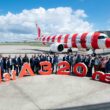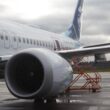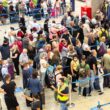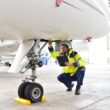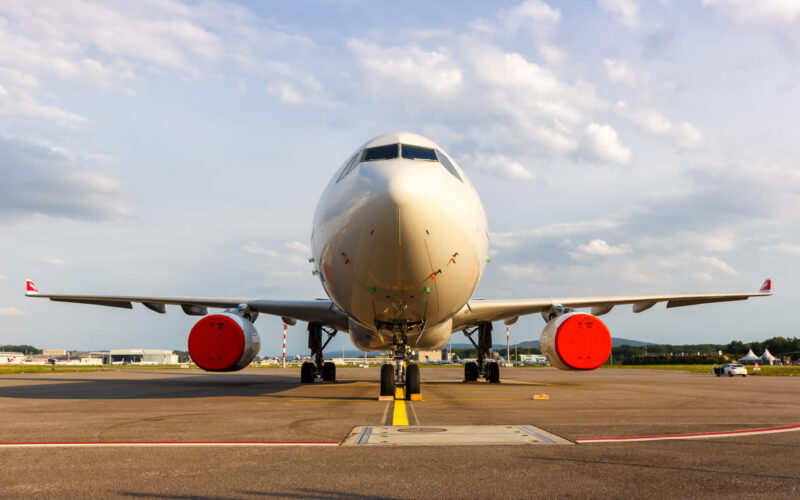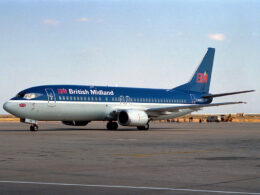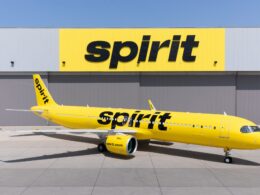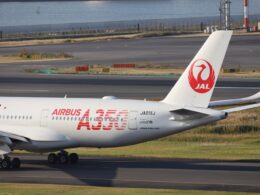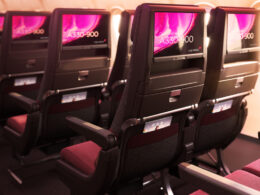The article was first published on August 27, 2020.
Much like the current crisis, another crisis that engulfed aviation at the start of the century marked numerous job losses and swift changes. While different, at the same time they share quite a few similarities, including the fact that potential passengers drift away from purchasing flight tickets due to fears for their safety and well-being.
The massive dip in demand almost immediately resulted in losses of jobs and changes in operations, as the landscape of aviation shifted. While the current pandemic-induced crisis in the industry ramped up slowly, the post-9/11 struggle can be immediately traced to the attacks on September 11, 2001. Despite the attacks commencing on United States soil, they affected the whole industry, as thousands upon thousands of jobs were lost when passengers became wary of boarding an aircraft.
Much like today, whereupon airlines have announced job cuts numbering tens of thousands of full-time positions. On August 25, 2020, for example, American Airlines (A1G) (AAL) indicated that as many as 19,000 jobs would be cut when the CARES Act stimulus package expires. Lufthansa Group set the number at 22,000, while British Airways has been under increased scrutiny for its plans to slash 12,000 jobs. Even the small guys have suffered, as ExpressJet, a U.S. based regional airline indicated that it would halt operations starting October 1, 2020.
But what was the atmosphere almost 19 years ago, when the industry had to deal with an unprecedented set of events?
Abrupt stoppage and sudden changes
Almost immediately after the attacks, the airspace in the United States was closed. On September 13, 2001, some flights had resumed, but chaos continued. Eight people were arrested at New York’s John F. Kennedy International (JFK) and LaGuardia (LGA) airports.
“Certainly, this is being looked at – that a hijacking was thwarted. There is a concern in our office that this may have been another attempt,” responded a federal official to a question whether the arrests were related to additional hijacking attempts, reported CNN.
International travel also came to a halt, including the fact that foreign-registered aircraft were not permitted to land on United States soil. For example, a TAP Air Portugal Airbus A340 was forced to turn around, much like an Alitalia aircraft that departed Rome, Italy towards JFK, documented Reuters.
Airlines based outside the United States were waiting for orders from the Federal Aviation Administration (FAA), as changes to safety procedures were coming. They did come, as the FAA issued new rules to enhance security on aircraft. Specifically, cockpit security was at the forefront of the issue. The International Civil Aviation Organization (ICAO) summarized the changes as follows:
“In light of the events of September 11 as well as incidents involving unruly passengers, the U.S. believes that it is essential that States take action to protect the flight deck from forcible intrusion by persons. Given the urgency of the situation, the FAA has established new flight deck door requirements for part 129 airplanes, so that airplanes operating in the United States, whether foreign or domestic, will have improved flight deck doors by April 2003.”
Summarizing the changes, all airlines that operated or wished to do so, had to modify flight deck doors to be safe from a potential forcible intrusion, in addition to being able to withstand direct gunfire from a small gun.
Airport procedures and safety measures
Changes in airport procedures also came. Instead of airline employees scanning passengers, the Transportation Security Administration (TSA) assumed this role, at least in the U.S. The ramp-up of operations at TSA was impressive to say the least – a report prepared by the United States General Accounting Office (GAO) highlighted that TSA went from 13 employees in January 2002 to thereabouts of 65,000 employees just a year later.
While it could be compared to the situation today, whereupon human resources were drawn in from outside the industry to conduct testing, the major difference is, of course, the fact that no unified global policy came from the FAA, European Union Safety Agency (EASA) or ICAO.
“Sluggish, chaotic and illogical approach to travel restrictions, an area where we have watched other nations move quickly and decisively while our government has remained in its own decision-making lockdown,” commented London Stansted Airport (STN) chief executive officer Charlie Cornish, pleading for an end to the chaos surrounding UK government’s policies regarding the current pandemic.
The ICAO’s COVID-19 established a Council Aviation Recovery Task Force (CART) to address challenges related to the crisis and the recovery going forward.
“It is [member – ed. note] States’ responsibility to maintain security across all operations,” summarized CART’s report on what kind of security and facilitation-related measures ICAO member states should take up.
Aviation, much like every industry throughout the global economy, is fighting an invisible enemy with symptomatic and asymptomatic cases lingering around. But having no unified approach is delaying the groundwork to restart the industry, when the ground around it is already shaking and throwing things off the shelf, including the livelihood of many people who are or were employed in aviation.
Cost and job cuts
Seemingly very shortly after the tragic events on that September evening, airlines recognized how drastically the demand has slumped. Not even a month later, the initial round of layoffs began, as AMR Corporation (parent company of American and Trans World Airlines), Continental Airlines, Delta Air Lines, US Airways, and UAL, parent of United Airlines, cut as many as 20,000, 12,000, 13,000, 11,000, and 20,000 jobs, respectively. In total, during the month of September alone, 100,000 jobs were lost in the industry, reported the New York Times on September 27, 2001.
U.S. based airlines were not the only ones under financial pressure, as British Airways reduced its workforce by 7,000, while Virgin Atlantic let go 1,200 employees, read a publication by Eurofund, an European Union agency, issued on November 4, 2001. Swissair, the predecessor to Swiss International Air Lines, declared bankruptcy in October 2001. Sabena, which was partly owned by Swissair, followed suit and announced its liquidation in November 2001.
International Air Transport Association (IATA) predicted that airlines would lose $10 billion of revenue throughout 2001. A much grimmer prediction was issued in June 2020, when the association predicted that the industry would lose as much as $84 million, as passenger numbers would drop to as low as 2.25 billion, a number last seen in 2006.
Airlines had to adapt to a new reality in both cases, nevertheless. The drop in demand, 19 years ago and now, called for a second look at one’s fleet composition, as older and more inefficient aircraft were put to rest much earlier than planned before demand dropped. 2,000 commercial aircraft were parked, including Boeing 727s and older 737s, McDonnell Douglas and Douglas products such as the DC-9, DC-10, MD-11, and MD-80s, showcased a report prepared by Princeton University’s Professor Robert F. Stengel.
A 737-200 cost between $3.5 to $5 million in 2000, highlighted the New York Times. In 2003, however, the number plummeted to as low as $1.5 million, indicating how much value aircraft have lost. Again, a depressing parallel can be drawn here, as during the COVID-19 crisis, the metal tubes flying passengers lost a very fair share of value, as less passengers wanted to be carried by the aforementioned tubes in the sky.
Throughout 2020, the price for aircraft has also dropped, even touching freshly produced equipment, as newly produced narrow-bodies were valued between 20% and 25% less than they were at the start of the year. Off-the-shelf wide-bodies were priced as much as 30% lower, Centre of Aviation (CAPA) analysis showed in July 2020.
Thus, manufacturers have followed airlines and trimmed their workforces. Boeing cut as many as 30,000 jobs throughout the post-9/11 period. Airbus initially did not plan any layoffs. In September 2001, an Airbus spokesperson told the New York Times that the company did not have “a culture of hire and fire.” European Aeronautic Defence and Space Company (EADS), the parent company of Airbus, highlighted in its 2003 financial report that throughout 2001 and 2003, its workforce grew from almost 103,000 employees to more than 109,000 workers.
The COVID-19 crisis, however, did not spare either of the players in aircraft manufacturing duopoly. Airbus has aimed to cut as many as 15,000 positions, while the Chicago-based Boeing has looked at reducing its workforce by 16,000 people. The number is set to increase, as chief executive of the manufacturer David Calhoun stated on July 29, 2020, that the company had to “further asses the size of our workforce.”
Fluctuations to a manufacturer’s or an airline’s headcount depends on the demand for air travel. While IATA’s director general and CEO Alexandre de Juniac stated that the worst days for the industry are behind it, as the association predicted a $84 billion loss, the situation all depended on whether or not there was a second major wave of COVID-19 infections, added de Juniac.
Fears of travel
The one uniting factor of the two crises, at the end of the day, is the fact that following or during the period, passengers are wary of getting onto an aircraft.
Following 9/11, worldwide travel slumped. IATA’s publication on the impact of the attacks read that a permanent slump in demand in the U.S. domestic market dropped as much as 7%, while yields slumped 10.1%. Harumi Ito and Darin Lee, who compared the impact of the September 11 terrorist attacks on international airline demand, concluded that in the United States alone, demand dwindled 19.6%, which did not subside by the end of 2003. In Europe, the downfall was as much as 33%. Incorporating the invasion of Iraq and the SARS outbreak, the negative trend fluctuated between 15% and 36.5%.
So far, IATA predicts that demand will plummet as much as 54.7% in 2020. At first glance, industry executives share the viewpoint that 2019-levels of travel would only return in 2022/2023, while a worst-case scenario points to a recovery a year later.
“The authors attributed the ongoing demand shift to factors such as increased fear of flying, as well as the more stringent security procedures at US airports that have made traveling by air less convenient than before,” read Ito and Lee’s research.
In general, whenever a potential traveler is looking to book a flight, a multitude of risk factors are considered, but more often than not, they are “related to health concerns, terrorism, crime or natural disasters at tourist destinations,” reads research by David A. Baker from Tennessee State University. While Baker did note that economic factors “most likely” had a say in the post-9/11 slump, the economic uncertainty caused by the current pandemic cannot be underlooked. According to the Organisation for Economic Co-operation and Development (OECD) predictions, if a second wave is surfed through, the global economy would shrink by 6%. If a second wave forces the global economy to grasp for water, the output drops by 7.6%.
A passenger survey done by IATA does showcase that 64% of travelers will wait for the globa, and personal financial situations to improve. However, concerns of contracting COVID-19 are very relevant. In June 2020, 83% of surveyees were concerned about contracting the virus during their travels. While that is a drop-off from 90% in April 2020, the number is very high. Passengers were also concerned about being on a crowded bus or train on their way to the aircraft. Sitting next to someone who might be infected is also a big concern, the survey showed. While safety measures like screening passengers prior to departure or mandatory masks for all does create a feeling of safety, a sudden quarantine is very problematic. In June 2020, 85% of respondents said that the possibility of being quarantined is concerning, compared to the 83% of people who were afraid of contracting the virus.
While the difference is marginal, combining a proper quarantine policy with various safety measures that have been implemented would create a healthy cocktail of demand. But now, the cocktail only induces a headache for executives and passengers alike, as chaos and irregularities are not a very good mix to take in.

